
*My previous blog covers the general guidelines for storage of ready-to-use flammable and combustible liquids in storage cabinets.
The storage requirements of flammable and combustible liquids originate from the National Fire Code of Canada (NFCC). But it is also key to verify if there are any additional regulatory requirements set out by Provincial and municipal governments.
When transporting flammable liquids, the classification, labeling, and marking requirements stem from the Transportation of Dangerous Goods Regulations (TDGR) and for labeling purposes is also acceptable for storage, but when the National Fire Code of Canada (NFCC 2015) classifies the liquids, they will not use Class 3 and packaging groups. The NFCC has a different classification scheme; for example, UN1203 Gasoline, Class 3, PG II would be considered Class IB commodity for the purpose of the NFCC regulations. Please see the table below.
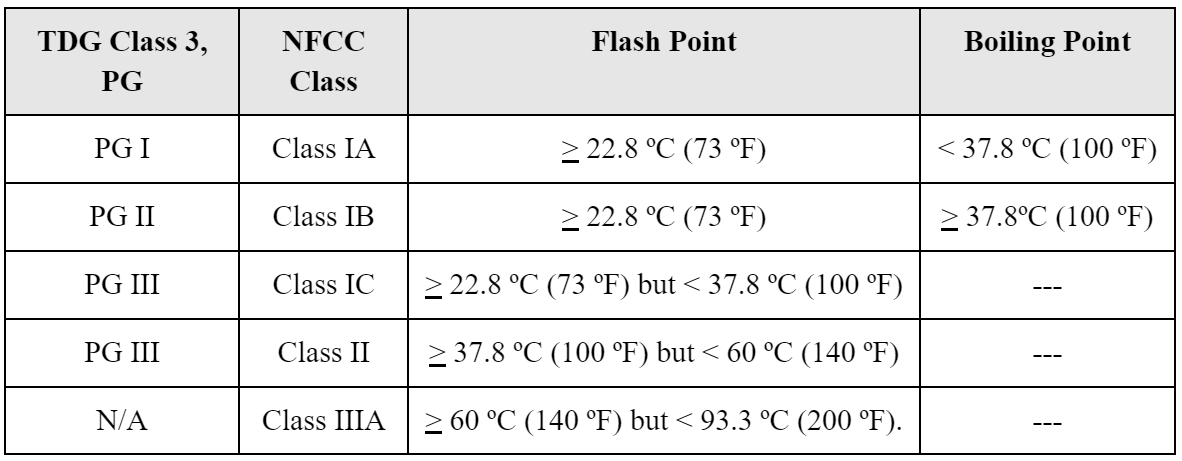
The NFCC classifies major occupancy facilities into twelve groups and divisions (e.g., Group F, division 1). This can be complicated, and an individual must be certain of the storage facility classification type. The table below has four examples of occupancy that your storage facility may apply, but for the purpose of this blog, I am going to focus on the most prevalent, Mercantile Occupancies.
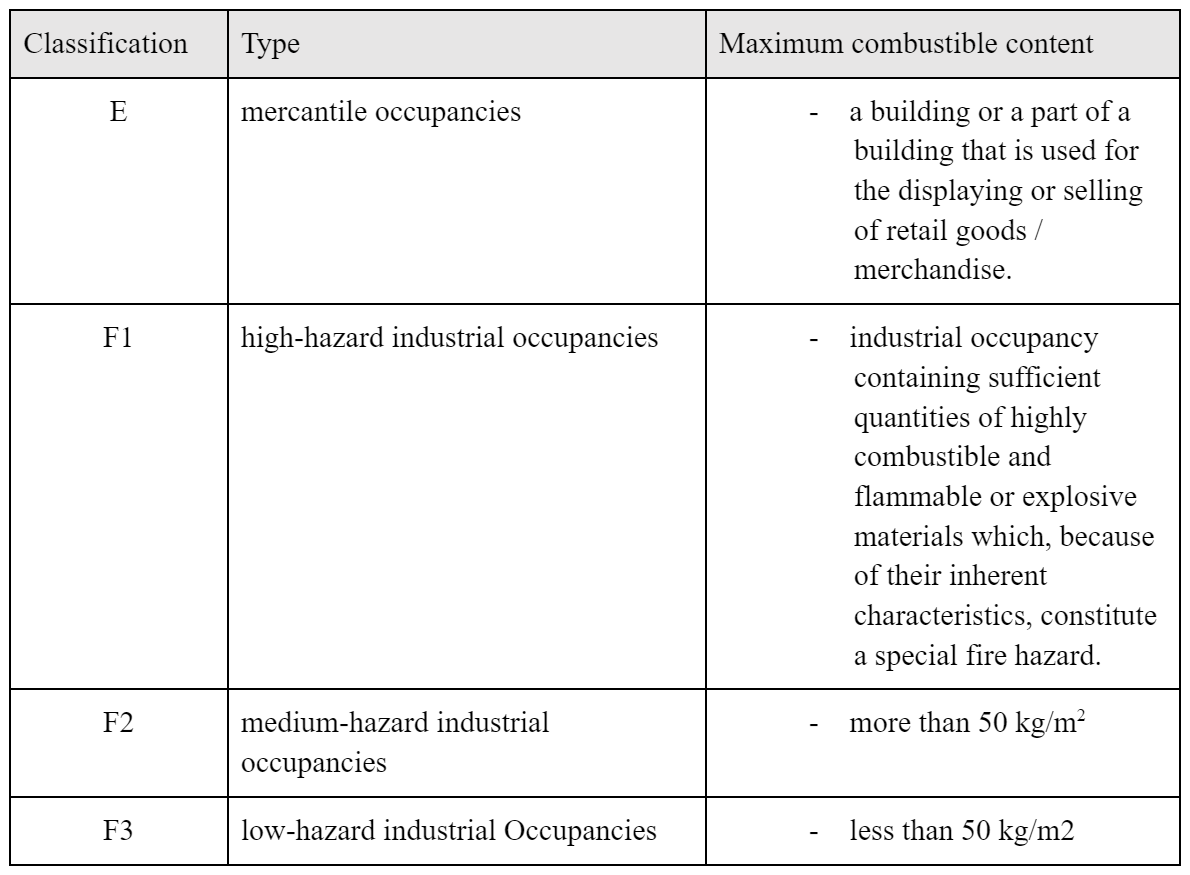
The maximum storage requirements for a mercantile occupancy for the indoor storage of flammable and combustible liquids will depend if the storage area has a fire suppression system or not (protected vs. unprotected). A building may also have more than one individual store area (ISA), but there will be a maximum amount per building. The following table breaks down the maximum allowable quantities palletize or bulk containers of flammable and combustible liquids.
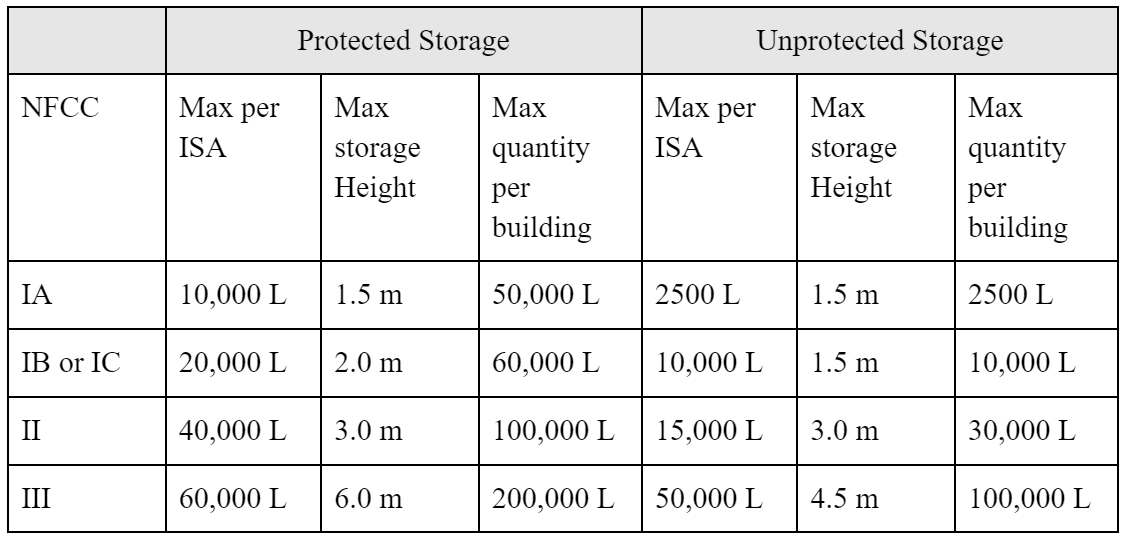
This table is for the maximum amount of flammable and combustible liquid allowed in storage racks in a protected ISA or building.
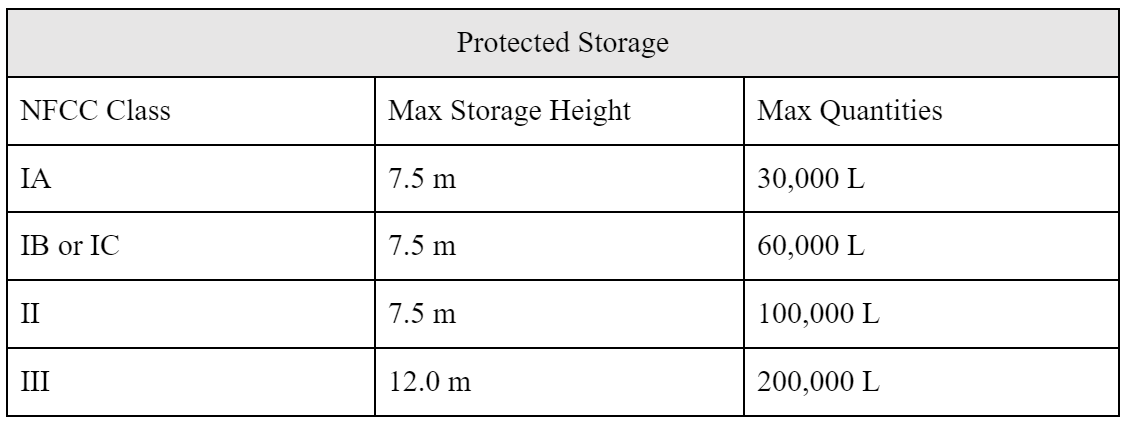
It’s also important to note if you only store pre-packaged flammable and combustible liquids, natural ventilation is acceptable. But, for other forms, mechanical ventilation is required. You must ensure racking or piles are arranged to provide aisles of at least 1 m in width clearance.
NOTE: The NFCC also has provisions for outdoor storage of flammable and combustible materials. I strongly encourage you to check your local authorities for guidance.
Stay up to date and sign up for our newsletter!
We have all the products, services and training you need to ensure your staff is properly trained and informed.
 OSHA / WHMIS / GHS Training Courses |
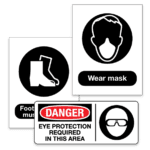 Custom or Stock Signs |
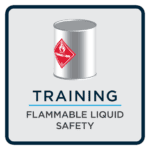 Flammable Liquid Safety Webinar |


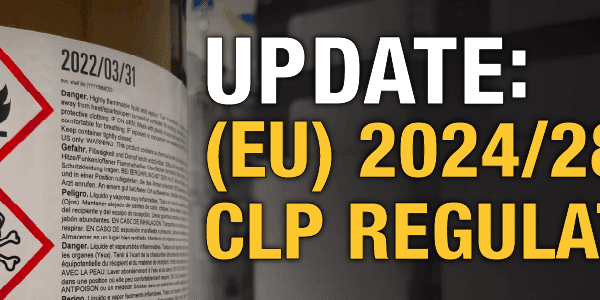



 ICC USA
ICC USA ICC Canada
ICC Canada